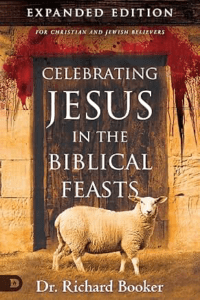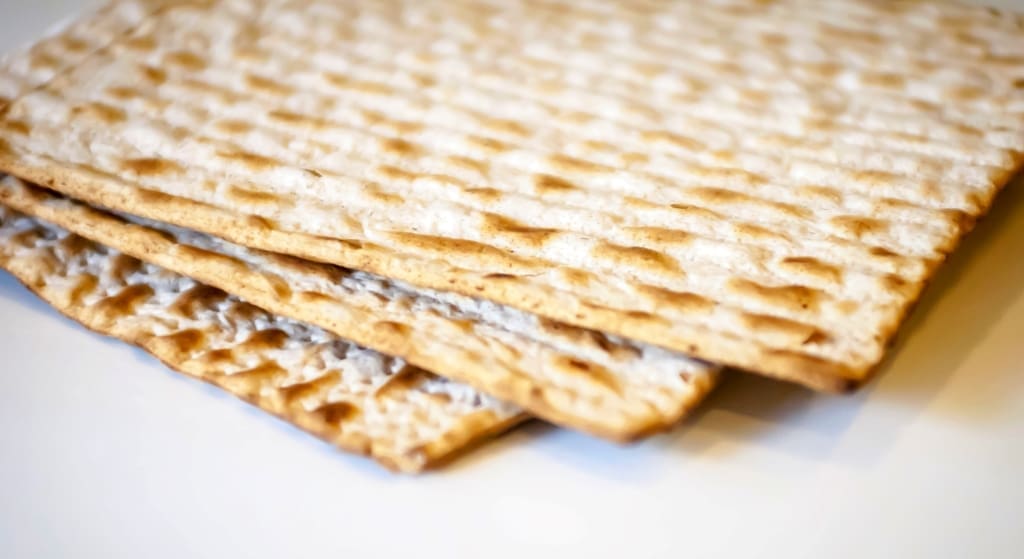
Basics of the Biblical Holy Days
As Believers seek to enrich their faith by incorporating biblical Holy Days into their family traditions, the amount of information on these days and how to celebrate them can be overwhelming and confusing. I want to offer just a basic overview of the 7 “appointed times” commanded by God to be kept by His people in Leviticus 23 (and elsewhere).
Chapter 23 opens with a repeat of the command to keep the Sabbath. The Sabbath is sometimes called the most holy of days, so it would be an excellent place to start if you don’t already keep it. It then lists and explains the 7 Holy Days: Passover, Unleavened Bread, Firstfruits, Shavuot, Yom Teruah, Yom Kippur, and Sukkot.
For further information on the Hebrew Calendar, read The Hebrew Calendar Explained.

Appointed Times
Passover Feast (Lev. 23:5, Exodus 12, and others)
The focus of Pesach (Passover in Hebrew) is to remember what God did for His people when He rescued them from slavery in Egypt. The whole story is found in Exodus chapters 3-15 (it’s incredible!), but here’s a brief overview. The Passover celebration, combined with the Festival of Unleavened Bread (below), lasts eight days (seven in Israel), and a symbolic meal called a Seder, meaning “order,” is traditionally held on the first and second nights. Passover is celebratory rather than somber because it’s a reminder of our freedom and what God has done for us – both as His people and through our Messiah.
Elements of the Passover Seder include:
- Matzah (unleavened bread). The matzah symbolizes the unleavened bread the Israelites ate because they left Egypt with no time for their bread to rise. The matzah is also like Jesus, who wasn’t “leavened” with sin so that he could be a sacrifice for ours.
- A shank bone. This bone symbolizes the lamb sacrificed to save the Israelites from the final plague on the firstborn. For Christians, this would also point to Jesus, our Passover lamb, who was sacrificed to save us from the slavery of our sin.
- Charoset. A mixture of apples, honey, and nuts. Charoset reminds us of the mortar used by the Israelite slaves to build brick buildings for the Egyptians.
- Wine. Four to five cups are used in the Seder, and one is used in a procedure resembling the Lord’s Supper in the New Testament.

Festival of Unleavened Bread (Ex. 12:15-20, Lev. 23:6-8, and others)
The Festival of Unleavened Bread takes place during Passover week. Although this seems like the remainder of the Passover week, the Bible separately mentions Chag HaMatzot, or the Festival of Unleavened Bread. It specifically says that we are to live these seven days without leaven, otherwise known as yeast. Biblically, yeast can symbolize sin in our lives (Matt. 16:6, 1 Cor. 5:6-8, and others). Called chametz in Hebrew, foods containing yeast are cleaned out of the homes of those participating in this festival.
This cleanout provides a beautiful picture of the sin in our lives and how we must work diligently to clean it all out. It also shows our need for a savior because we can’t get rid of all of it! It sounds difficult because it is, but I challenge you to do this with your family! Mine has had so many great conversations about invasive sin in our lives during this process and how difficult it is to get rid of. Even if a tiny bit is left, it can grow and take our lives over, just like it only takes a small amount of yeast to leaven the whole batch of dough.
The “deadline” for the leaven cleanout is the first night of Passover. Since yeast can naturally occur in grains mixed with water, many people rid their homes of wheat, oats, barley, spelt, and rye. Some very devout Jews go so far as to get rid of anything resembling a grain, including corn and beans. My family cleans out all leavening agents and their products. We include yeast, baking soda, baking powder, etc.
Feast of First Fruits (Ex. 23:16, Lev. 23:9-14 and Deut. 26:1-11)
The second day of the Festival of Unleavened Bread is called The Day of First Fruits or Yom HaBikkurim. It marks the first day of the countdown to the next Feast, the Feast of Weeks, which occurs 50 days later. On the Day of First Fruits, the priest would wave a sheaf of green barley, an omer, to start the countdown. A male lamb would also be sacrificed. Today, people celebrate this day and the next 49 days as days of spiritual introspection. Since these days lead up to the day God’s Law (the Torah) was given, on the Feast of Weeks, they’re a time for preparation to receive the word of God.
One fantastic thing about First Fruits is that it’s thought to be the day that Jesus rose from the dead! Paul also refers to Jesus as the first fruits (1 Cor 15:20-23).
Feast of Weeks (Lev. 23:15-21, Ex 34:22, and others)
Christians know this Feast as Pentecost, and Jews as Shavuot. It is the fiftieth day and the conclusion of the counting of the omer, which started on the day of First Fruits. Shavuot is the day, 50 days or 7 Sabbaths plus one day, after the Exodus from Egypt, that the Ten Commandments were given to the Israelites on Mount Sinai. (Ex. 24). It’s also the day the Holy Spirit was given to the apostles (Acts 2:1-36), seven weeks after Jesus’s resurrection.
Out of respect for the Torah, or Law, being given to them by God, many Jews stay up all night on Shavuot, reading the Torah (the first five books of the Old Testament). Milk and honey are often served in some fashion as a reminder that God kept His promise to give a “land flowing with milk and honey” to His people (Lev. 20:24). Christians often celebrate Pentecost as the birth of the church – a celebration of our salvation and the gift of the Holy Spirit within us.
Feast of Trumpets (Lev. 23:23-25, Num. 29:1-6, and others)
Also known as Rosh Hashanah or Yom Teruah, this solemn memorial Feast marks the beginning of the High Holy Days in autumn. It lasts two days and includes the following:
- Blowing the shofar (ram’s horn).
- Calling for the people to repent of their sins.
- Offering burnt offerings.
In the Temple’s absence, Jews celebrate the Feast of Trumpets with ten days of repentance and examination of their lives before God. After the ten days is the Day of Atonement.
As the first day of the Jewish year, hope for a “sweet” new year is expressed by eating apples dipped in honey. While straight challah loaves are served on the Sabbath and other Jewish celebrations, round challah is traditionally served during this Feast. A round challah can symbolize either the cyclic nature of the calendar year or a crown, a reminder that God is the King of the universe.
The Feast of Trumpets is a kind of Judgement Day, with the final verdict delivered on The Day of Atonement. In the New Testament, there are references to trumpet blowing combined with judgment, reminiscent of this Feast (Matt. 24:30-31, 1 Thess. 4:16-17, and Rev. 11:15).
Day of Atonement (Lev. 23:26-32, Ex. 30:10)
Ten days after the Feast of Trumpets is the most important Holy Day, the Day of Atonement or Yom Kippur in Hebrew. This day included the sacrifices through which God would forgive the sins of His people as a group, not individually. The command was to make payment for their sins through offerings and to “humble their souls.” In these post-temple days, the Feast of Trumpets includes a 25-hour fast, giving to charity, and intense prayer focused on confession and repentance.
Other traditions on the Day of Atonement include wearing white to signify purity or burial clothing and thus the need for repentance. Messianic Jews and Hebraic Believers view this Feast similarly, but some change the focus to Jesus, the complete atonement for our sin. At the end of the Day of Atonement, a breakfast-type meal is served to break the day’s fast.
Feast of Tabernacles (Lev. 23:33-36, Ex. 34:22, Num. 29:12-34, and others)
Five days after the Day of Atonement, this seven-day Feast is
called the Feast of Booths or Ingathering. It’s called Sukkot in Hebrew, meaning “booths” or “shelters.” Biblically, this harvest feast required sacrifices each day of the Feast.
Today, the Feast of Tabernacles is observed mainly by God’s people leaving their comfortable homes and living in a temporary dwelling called a sukkah in Hebrew. A sukkah is like a hut, with at least three sides, and its roof is made of leaves or branches and decorated with flowers or other décor. In doing this, they remember when God rescued them from slavery in Egypt and provided for them in the desert, as He also provides for us today and will forever.

It is somewhat like a Thanksgiving Day Feast to thank God for His provision. In reference to Leviticus 23:40, waving or shaking four plants (the Four Species) from Israel – myrtle, palm, willow, and citron, is also done while a blessing is said.
It is also a celebration of God’s “tabernacling,” or coming to live with His people. On the Feast of Tabernacles, Jews looked forward to the day God would pour out His Spirit on His people as prophesied in Joel 2:28. In John 7, during the Feast of Booths, Jesus spoke of the Spirit being given and called it Living Water, which would be an eternal thirst quencher for the soul.
Eighth Day (Lev. 23:36 and 39, Num. 29:35)
Although mentioned separately, the Eighth Day is simply the last and greatest day of the Feast of Tabernacles. This day is a Sabbath (even if it doesn’t fall on Saturday) and is more spiritual than the previous seven joyful days of the Feast of Tabernacles. Shemini Atzeret is this Feast’s Hebrew name, and its traditions vary. The Four Species is not waved on this day, and the sukkah may or may not be used. Different prayers are said than during the previous seven days, and a prayer for rain is often included.
The day following the Eighth Day is called Simchat Torah. It’s not one of the Biblical Holy Days. It’s a festive celebration, celebrating the end and subsequent beginning of the Jewish Torah reading cycle. It is a celebration of thanksgiving to God for giving His word to His people. This celebration is sometimes combined with the Eighth Day Feast.
** Free printable Calendar of Important Dates from Holy Branches! **
While these Feasts may initially be foreign to Christians, they add value and enrich our faith. Physical symbols and biblical celebrations remind us of what God has done, is, and will do in our lives. They give us engaging ways to pass our beliefs on to the next generation and provide our families with traditions that bind us together in our faith and as God’s kingdom here on earth.
Comments (6)
Leave a Reply Cancel reply
Search
Recent Comments
- Patricia Boone on How to Find a Hebraic Congregation
- Holy Branches on The Hebrew Calendar Explained
- lachumba on The Hebrew Calendar Explained
- Richard Close on Is the Sabbath Really THAT Important to God?
- Yah Behna Behna Yisrael (Govt name) WARREN PARKS on How to Find a Hebraic Congregation






Thanks for this information!!!!
I have been studying the Torah Class by Tom Bradford, Seed of Abraham Ministries for 6 years now. It is full of the Hebrew heritage we so need to understand, Diane
Reading Lev. 23 Passover is not a Holy Day nor is Firstfruits even though they are Feasts…Last day of Unleavened Bread and 8th Day of “Sukkot” make up the 7 Holy Days.
Thank you for the information you have provided. It will help me to better prepare for each Hebrew holiday and the correct way to serve YAHWEH.